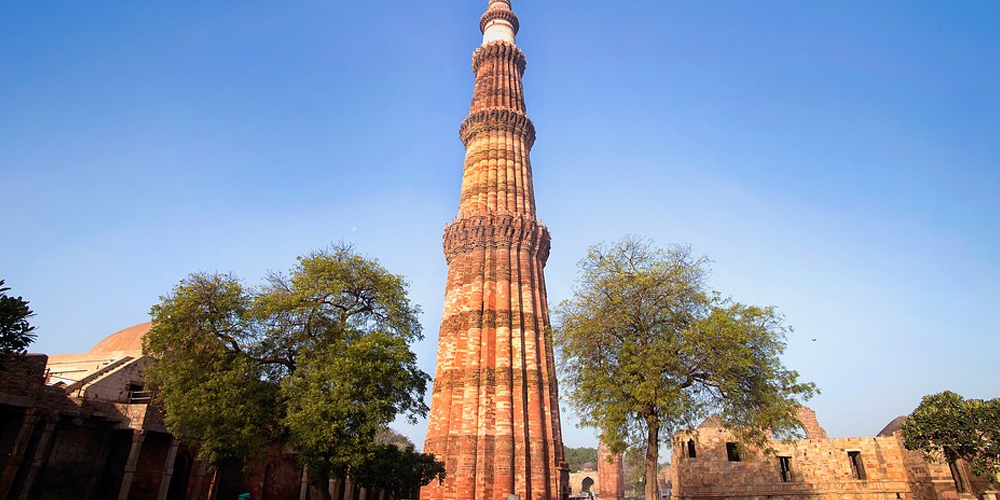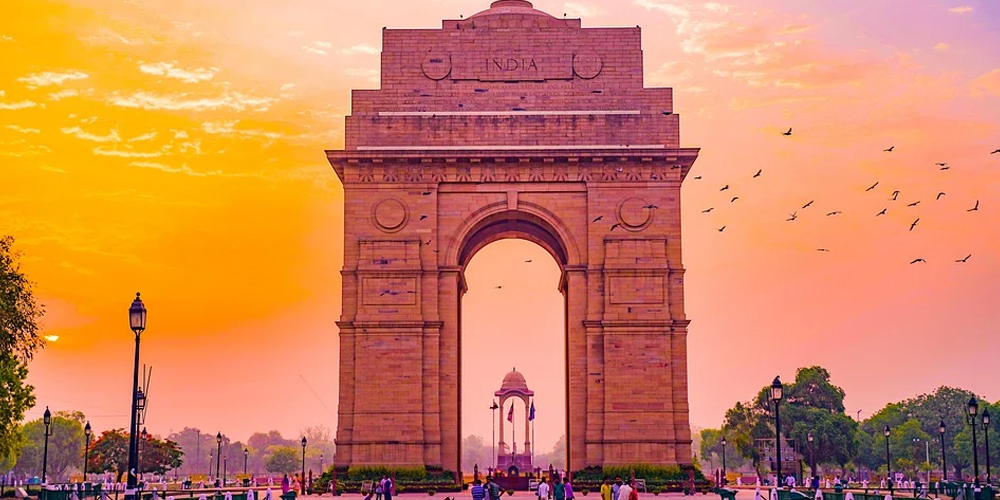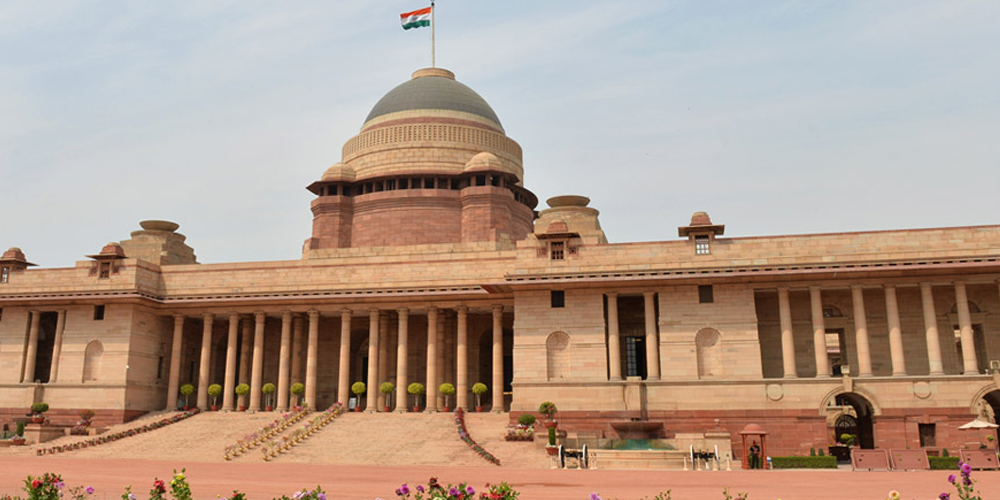
One of the most populous regions in the world, Delhi is a heady conflation of tradition and antiquity, important as both a religious center and India's busiest multinational gateway. Its history is as old as the ancient Yamuna River and a natural dividing line between New Delhi and Old Delhi.
Paraphernalia to see and do in Delhi and New Delhi are cornucopian and include its distinguishable handicrafts and crafts industriousness, its multiple majestic monuments, uncountable performing handicrafts venues, and a paradise for shoppers. So before making the trip to this vibrant city, make sure to glance at this list of famous attractions in Delhi.

The magnificent Red Fort was made by Shah Jahan in the year 1648 and served as the pad of Mughal emperors until 1857. This remarkable structure, with its high, red sandstone walls sprawls in an area of more than two km and the entire Red Fort is shaped like a crescent. The striking main entrance, the Lahore Gate, is named this because it overlooks Lahore in Pakistan, while the grander Delhi Gate was utilized by the emperor for regular spectacles.
When you enter through the Lahore Gate, you are greeted with glittering alleys of Chhatta Chowk, a 17th-century covered bazaar where things like silks, accessories, gems, and tableware can be bought, along with antiques and eatables. The Naubat Khana inside the Red Fort was home to the singers who sang and played instruments for the emperor, and its impressive alleys still contain a multitude of intriguing musical instruments like kettledrums, gongs, and cymbals. Diwan-i-Am, the Hall of Public Audience, where the emperor would take his subjects, is also worth glimpsing for its amazing white marble. There is a vast land stretching for yards where you can sit and relax and have some pleasant time with your loved ones.

Residing in a beautiful and huge square garden, Humayun’s Tomb is a grand shrine built with red sandstone and white marble. The structure was formulated as a model of the Taj Mahal and emphasizes the skills of the artists of that era and the beauty of the Mughal architecture. Constructed in mid-16th century by Haji Begum, the older widow of Humayun, as a remembrance to her husband, the tomb is enveloped by luscious green gardens and some other tombs such as a tomb of Humayun’s barber, tomb of Isa Khan (architect of Taj Mahal). The Humayun Tomb is a perfect example of Lodi architecture and is octagonal in shape. A pond with sparkling blue water faces the front of the tomb enhancing its beauty and grandeur. Relax on the grounds in a sunny winter day or glimpse the magnificence architecture at night when it gets illuminated with lights and looks marvelous.

Constructed in the 12th century, the marvelous Qutub Minar is India’s towering minaret and also a UNESCO World Heritage site, attracting multitudinous international guests eager to ascend to the top of the tower for its mind-boggling view of the area surrounding it.
This elegant five-story tower is more than 70m high and is decorated with detailed carvings featuring the account of Qutub along with notations from the Quran. It is noteworthy for being designed with various types of stones (the initial three levels are made of red sandstone, while the fourth and the fifth stories are of marble and sandstone). The tower also comprises the Quwwat-ul-Islam Masjid, a mosque at the ground floor of the minar, a gateway constructed in the 1310, the tombs of Alauddin Khalji, Altamish, and Imam Zamim, and an Iron Pillar of more than 2000 years old, the Alai Minar.
The area surrounding the Qutub Minar is also very well maintained and beautiful. You can sit on the stone benches or on the ground and have selfies or you can go and explore the entire area and all other small structures that reside there. A must-visit place, Qutub Minar offers exquisite view and a glimpse in our historic culture.

Resembling a bit like the popular Arc de Triomphe in Paris, the magnificent India Gate is an epic gravestone arch confected as a commemorative to Indian fighters who have died in WWI. A permanent flame flares beneath the enormous structure and its walls are engraved with soldiers' names who were killed during the war.
The structure of India Gate stands tall on a foundation of red sandstone and features a shallow domed shape bowl on top which sometimes gets replenished with burning canvas such as on important occasions. It overpowers the parkland around it which is always busy and swarming with crowds of travelers and locals alike, enjoying an outing or just relieving. For acknowledging the real beauty of India Gate, try to go there at night. It's a spectacle to behold when the structure of India Gate and the fountains close by are illuminated.

Hauz Khas Fort is situated at the village of Hauz Khas and was constructed by Alla-ud-din Khilji. It is a huge complex containing the ruins of a royal water tank, Islamic Madrasa, pavilions, and numerous different monuments. The site is famous for its lost beauty and the serene ambiance it offers.
The process of building the Hauz Khas fort commenced with the excavation of water tanks to provide water to the inhabitants of the nearby Siri Fort. The tank was named Hauz-e-alai (Hauz implies tank in Urdu). Later on, Firoz Shah Tughlaq ordered the rebuilding of the water tank and thus named it Hauz Khas (the royal tank).
People come here to enjoy the view and to spend some time while basking in the sun. It also offers a perfect backdrop for photoshoots and a playground for kids to play. You can enjoy a leisurely walk around the fort and the whole complex or attend the light and sound show that is organized by the State government every evening (except for holidays). The view of the sunset from the Hauz Khas complex is mesmerizing and this is a must-see phenomenon. There is also a food court available for you to enjoy some delicacies while on the tour of the fort.

The Jama Masjid is one of the major attractions in Delhi with its magnificent architecture and rich history. It is located in Old Delhi and is considered the most extravagant mosque in India. Built in the 17th century in 1644 by the Mughal Emperor Shah Jahan, this magnificent structure took 12 years and one million rupees to complete. Initially, this mosque was called Masjid-I-Jahan Numa, which means "a mosque that echoes the world" but later was renamed Jama Masjid or Friday Mosque.
The architectural style of the monument is Indo Islamic and red sandstone and white marble is being used in the construction of this grandeur. The building is 261 feet long and 90 feet wide with three big arch-style gates, three domes made of marble, four towers, and two minarets along with a gigantic courtyard with a capacity of 25000 people at once. The eastern gate is the royal gate which was used by the emperors only and now opens on special occasions. The marble floor is black and white with 899 specified spaces for devotees. The walls are decorated with colored motifs and floral designs. There are some important relics which include a copy of the Quran written on Deerskin, a beard hair of Prophet Mohammed, a pair of his footwear, and his footprints on the marble block. While visiting the Jama Masjid you can also shop at the local stores and eat delicacies at restaurants like Karim’s, a century old restaurant specializing in non-veg items.

Rashtrapati Bhavan is the house of the president of the world's greatest democracy. It is the epitome of India's power, democratic conventions, and secular characteristics. Constructed as the residence for the Viceroy of India during the British rule, the structure was completed in 1929. The first person to take up residence in the palace was the then viceroy of India, Lord Irwin. C Rajagopalachari was the first Indian to reside in the Government House as the Governor-General of India. When Dr. Rajendra Prasad became the first president of India in 1948, he changed the name from Government House to Rashtrapati Bhavan.
The structure is an H-shaped edifice possessing 5 acres of land in a 330 acres estate and with the use of pink and cream sandstone, the Rashtrapati Bhavan looks exquisite. The palace has four floors and 340 rooms, a corridor that stretches to 2.5 km, and gardens in 190 acres of land. The trip to this master palace is divided into three circuits. The first circuit has the main building and the primary lawn of Rashtrapati Bhavan including the mail halls. The second circuit houses the Rashtrapati Bhavan Museum Complex, while the third circuit takes you to the famous Mughal Garden, the herb garden, the music garden, and the Rashtrapati Bhavan spiritual garden. You can visit the Rashtrapati Bhavan by booking your slot in advance and have a look at this marvel with your own eyes.

An embodiment of Indian lineage, spirituality, and edifice, Akshardham temple is a very popular Hindu temple and a spiritual-artistic structure. Also recognized as Swaminarayan Akshardham, it is devoted to Lord Swaminarayan and has been listed in the Guinness Book as the World’s biggest Hindu temple.
The architecture of the temple is based on the ancient style of Vaastu Shastra and Pancharatra Shastra. Known for its marvelous edifice, the main temple sits in the center with a height of 141 feet, a breadth of 316 feet, and a length of 356 feet. It has 234 intricately carved pillars, 9 domes, and 20,000 statues of religious personalities from India. The ceilings and walls of the temple are adorned with carvings of deities, musicians, flowers, and dancers. The whole temple is made using Rajasthani pink sandstone and Italian Carrara. The complex is surrounded by exquisite gardens, a stepwell-style courtyard, several water bodies such as fountains, and some other structures. The temple is also a host for spellbinding water shows, Narayan Sarovar, and several rituals. A true nirvana for spiritual pursuers and art buffs.
With various amazing attractions and places to visit in Delhi, this historically rich and stunning place is a delightful destination to travel to in India. You will find attractions of all kinds here ranging from romantic to family-friendly, from vibrant fun spots to socializing hubs and eateries serving lip-smacking delicacies. Certainly, a paradise for travelers and explorers, Delhi is a place filled with art, culture, magnificent architecture, and delectable food.
Copyright 2012-2022 Indiamap Digital Pvt Ltd. All rights reserved. Privacy Policy | Terms of Use